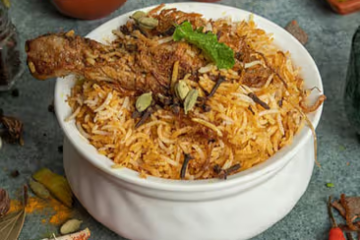As you admire the delicate beauty of Japanese tea sets, you may wonder about the meticulous craftsmanship involved in their creation. To form these functional works of art, skilled artisans begin with two simple elements from the earth – clay and fire. You can find exquisite examples at teasetbox.com. Through an intricate process honed over centuries, these natural materials are transformed into vessels that seem to come alive in the hands of the tea master. Join us as we explore the tradition of handcrafting Japanese tea sets from raw clay to finished pieces glazed and fired to perfection. Learn about the materials and methods used to shape, decorate, and strengthen these vessels to hold the comforting heat of tea. Discover how this enduring art form connects us to Japan’s rich cultural heritage with every sip from these handmade cups.
Materials Used to Craft Handmade Japanese Tea Sets
Japanese tea sets are crafted from natural and handmade materials that have been used for centuries. The primary materials are clay, glaze, and bamboo.
Clay
The clay used is typically a fine, dense stoneware that can withstand high firing temperatures. The most common clays are Bizen and Shigaraki, which produce a reddish-brown and gray-colored clay body respectively. These clays are kneaded thoroughly to remove air bubbles and achieve an even consistency before being shaped on a potter’s wheel into the various tea set pieces.
Glaze
Glaze is applied to the biscuit-fired clay and then re-fired in a kiln. The glaze fuses to the clay and hardens during this final firing. Glazes used on Japanese tea sets are usually transparent or translucent to showcase the natural clay body. Common glazes include ash, feldspar, and rice straw ash. These natural glazes enhance the rustic appearance of the clay.
Bamboo
It is used for elements such as the tea scoop (chashaku), whisk (chasen), and container to hold used tea leaves (chabako). Bamboo is a traditional material that is both decorative and functional for the Japanese tea ceremony. The natural bamboo complements the earthy tones of the clay and provides an organic handcrafted feel.
Using natural, handmade materials that have been crafted according to centuries-old traditions results in Japanese tea sets that bring the spirit of wabi-sabi to the tea ceremony. The simplicity, naturalness, and rustic beauty of these tea sets connect participants to the cultural heritage of the Japanese tea tradition.
The Process of Making Handmade Japanese Tea Sets
Handmade Japanese tea sets require meticulous craftsmanship and attention to detail. The artisans who create these sets follow time-honored traditions passed down through generations.
Selecting the Clay
The first step is choosing the proper clay. Yixing clay from China’s Jiangsu province is commonly used. Its porous, abrasive texture is ideal for absorbing and retaining the flavor of teas. The clay is hand-sorted to find pieces pure and plastic enough to throw on the potter’s wheel.
Shaping the Pieces
The potter places the clay on the wheel and shapes each piece – the teapot, cups, pitcher, and other accessories. Delicate care is taken to make the walls even in thickness and to join the pieces seamlessly. The potter constantly checks the shapes and sizes, making minute adjustments by hand.
Adding Details
The surface of each piece is then etched or stamped with decorative details, from simple lines to intricate patterns that symbolize natural elements. The potter must ensure that the details are symmetrical and aesthetically pleasing.
Bisque Firing and Glazing
The unfired pieces undergo a first firing at a lower temperature to harden them. They are then coated in a glaze and fired at a higher temperature. The glaze melts into a smooth, glossy coating while the clay vitrifies into a non-porous stoneware. Multiple firings are often required to achieve the desired result.
Final Polish
Finally, the cooled pieces are polished to enhance their luster and joined into a full tea set. The completed set embodies a harmony of design, reflecting the potter’s patience, skill, and dedication to craft. Using such a tea set to prepare and serve the tea adds to an elevated experience of this time-honored tradition.
Benefits of Using Handmade Japanese Tea Sets
Tradition is one of the primary reasons handmade Japanese tea sets are highly prized. The art of crafting clay tea wares has been honed over centuries by skilled artisans. Their creations embody beauty, harmony, and meticulous workmanship, representing quintessential Japanese aesthetics and reverence for nature.
Superior Craftsmanship and Quality
Handmade tea sets are crafted using traditional techniques passed down through generations. Artisans meticulously shape, carve, glaze and fire each piece to perfection. The results are wares of unparalleled quality and artistry that stand the test of time. These sets become more beautiful with age and use, developing a patina that enhances their charm.
Unique Character
No two handmade pieces are exactly alike. Artisans impart subtle differences and imperfections that give each item a unique character. These characteristics connect us to the human hands and spirit behind the creation. Using a handmade set is a profoundly personal experience that evokes a deep appreciation for heritage and cultural traditions.
Enhanced Experience
Exquisitely crafted tea wares elevate the tea drinking experience. Their beauty and quality delight the senses, fostering mindfulness and tranquility. Handmade pieces resonate with the energy and spirit of their creators, imparting those qualities to the tea. Many believe this enhances the flavor and aroma of the brewed tea. A handmade set transforms a routine part of day into an opportunity to pursue beauty, meaning and connection.
In summary, handmade Japanese tea sets represent time-honored traditions, superior craftsmanship, unique character, and an enhanced experience of beauty and cultural heritage. Their handmade imperfections poignantly reflect the human spirit behind the art. Using a handmade set allows us to partake of these profound and nourishing qualities.
Styles and Types of Handmade Japanese Tea Sets
Kyusu Teapots
Kyusu teapots are traditional Japanese teapots used to brew loose leaf green tea. They come in a variety of shapes, sizes, and materials, the most common being ceramic, clay, and cast iron. The spout and handle are typically attached separately to the pot. Kyusu teapots allow the leaves to expand and infuse the water, producing a flavorful cup of green tea.
Yunomi Teacups
Yunomi teacups are traditional Japanese teacups that accompany the kyusu teapot. They are available in a range of sizes, from single-serving to large, multi-person sizes. Yunomi teacups are most commonly made of ceramic, clay or porcelain. Their simple yet elegant design complements the kyusu teapot perfectly. Some yunomi feature beautiful traditional Japanese designs and patterns.
Chawan Rice Bowls
In addition to teapots and teacups, some high-quality Japanese tea sets include chawan, or rice bowls. Chawan are deep bowls used for serving rice, miso soup or pickles. Like the kyusu and yunomi, chawan come in a variety of materials, including ceramic, clay and lacquerware. Chawan featuring traditional Japanese pottery techniques like raku firing or kintsugi gold repair are especially prized.
In summary, the three main components found in handmade Japanese tea sets are the kyusu teapot for steeping tea, yunomi teacups for drinking, and chawan rice bowls for side dishes. When used together in an artful presentation, these pieces create an enjoyable experience of Japanese culture and hospitality. The handcrafted nature of the materials and designs produces tea sets that are as functional as they are beautiful.
FAQs About Handmade Japanese Tea Sets
Q. What materials are used to make handmade Japanese tea sets?
Handmade Japanese tea sets are crafted using natural clay and fired in a kiln. The two most common types of clay used are kaolin, a white clay, and kibushi, an iron-rich red clay. These clays are kneaded, shaped, and fired at a high temperature to produce the finished pieces. Glazes are often applied to kaolin clays before firing to produce vibrant colors and decorative patterns. Pieces made of kibushi clay are typically left unglazed to showcase the rustic texture and color of the clay.
Q. What is the process for making a handmade Japanese tea set?
Creating a handmade Japanese tea set is a labor-intensive process that can take several weeks to complete. First, the clay is cleaned, wedged, and shaped into rough forms. Skilled artisans then use a pottery wheel to shape each piece, including the teapot, cups, pitcher, and lid rest. The shaped pieces are left to air dry, then bisque fired in a kiln at a medium temperature to harden the clay. Glazes are applied to kaolin pieces before a second firing at a higher temperature to melt the glaze. The pieces are then assembled and packed for shipment.
Q. What are the benefits of using a handmade Japanese tea set?
Handmade tea sets offer an authentic Japanese tea ceremony experience. The imperfections and hand-touched quality of each piece create a sense of warmth, craftsmanship, and heritage. Handmade sets also tend to last longer and become more beautiful with age and use. The natural materials and traditional manufacturing process are healthier and more eco-friendly than mass-produced options. Finally, handmade tea sets support skilled artisans and help preserve valuable cultural practices.
Conclusion
As you have learned, handmade Japanese tea sets are crafted with great care and precision using natural materials like clay, wood, bamboo, and hemp. The process involves meticulous steps like choosing the clay, throwing and shaping the pieces, decorating them with natural dyes or hand-painted designs, firing them in a kiln, and assembling the final set. While modern methods exist, traditional techniques passed down through generations of artisans are still widely used today. The result is a beautiful, functional tea set that provides a soothing and meditative tea experience. The handmade touches connect us to the artisan, to nature, and to the ritual of preparing and sharing tea. With proper care, a handmade Japanese tea set will provide you a lifetime of meaningful tea experiences that you’ll treasure for years to come.




